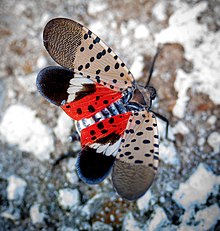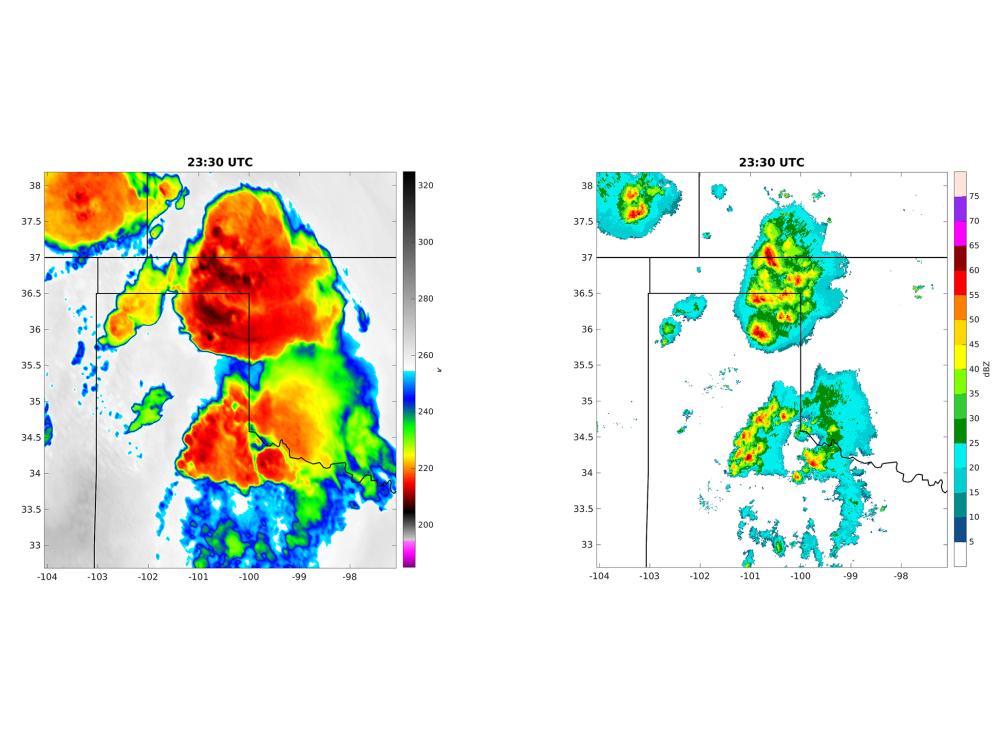2023-03-09 ペンシルベニア州立大学(PennState)

Spotted lanternfly displaying underwing by Wikipedia.
研究者は、3年間、2018年から始まった適用後のシーズンに、天然記念物と赤いカエデの花の中のニコチノイド残留物を調べた。その結果、非標的の蜜蜂の花粉媒介生物に対する急性死亡リスクは、ニコチノイドを薬剤散布する前に花が咲いた後に、赤いカエデに残る残留物に影響を受ける可能性があることが分かった。ニコチノイドは、アブラムシ類の駆除にも使用される。
<関連情報>
- https://www.psu.edu/news/agricultural-sciences/story/study-examines-effects-using-insecticides-spotted-lanternfly-control/
- https://academic.oup.com/jee/advance-article-abstract/doi/10.1093/jee/toad032/7070630?redirectedFrom=fulltext&login=false
ビワハゴロモ Lycorma delicatula(半翅目:Fulgoridae)の管理のための宿主樹へのネオニコチノイド散布による花粉媒介者への潜在的危険性 Potential risk to pollinators from neonicotinoid applications to host trees for management of spotted lanternfly, Lycorma delicatula (Hemiptera: Fulgoridae)
Jonathan Elmquist, David Biddinger, Ngoc T Phan, Timothy W Moural, Fang Zhu, Kelli Hoover
Journal of Economic Entomology Published:06 March 2023
DOI:https://doi.org/10.1093/jee/toad032
Abstract
Neonicotinoid insecticides are used to manage spotted lanternfly (Lycorma delicatula (White); hereafter SLF), a recently introduced pest in the United States. Neonicotinoids can harm nontargets, such as pollinators potentially exposed via floral resources of treated plants. We quantified neonicotinoid residues in whole flowers of two SLF host plant species, red maple (Acer rubrum L. [Sapindales: Sapindaceae]) and tree-of-heaven (Ailanthus altissima (Mill.) [Sapindales: Simaroubaceae]), treated with post-bloom imidacloprid or dinotefuran applications that differed in timing and method of application. In red maple flowers, dinotefuran residues from fall applications were significantly higher than summer applications, while imidacloprid residues from fall applications were significantly lower than summer applications. Residues did not differ between application methods or sites. In tree-of-heaven flowers, dinotefuran residues were only detected in one of 28 samples at a very low concentration. To assess acute mortality risk to bees from oral exposure to residues in these flowers, we calculated risk quotients (RQ) using mean and 95% prediction interval residue concentrations from treatments in this study and lethal concentrations obtained from acute oral bioassays for Apis mellifera (L. (Hymenoptera: Apidae)) and Osmia cornifrons (Radoszkowski (Hymenoptera: Megachilidae)), then compared these RQs to a level of concern. For A. mellifera, only one treatment group, applied at 2X maximum label rate, had an RQ that exceeded this level. However, several RQs for O. cornifrons exceeded the level of concern, suggesting potential acute risk to solitary bees. Further studies are recommended for more comprehensive risk assessments to nontargets from neonicotinoid use for SLF management.



